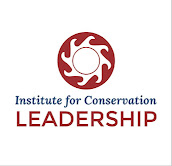Part I of the regulation covering unconventional shale gas facilities was already approved by the EQB and by the Independent Regulatory Review Commission, but is opposed by Republicans in the General Assembly. Read more here.
Conventional oil and gas facilities account for 80 percent of methane emissions from the oil and gas industry in Pennsylvania because they have done little or nothing to control them.
The regulation would affect 4,719 conventional well owners of approximately 27,260 facilities.
The unconventional shale gas industry accounts for 20 percent because they have implemented some controls. Read more here.
DEP said both parts of the regulation are needed to comply with a mandate from the U.S. Environmental Protection Agency to adopt controls on methane emissions from oil and gas operations by December 16 or face the potential loss of over $500 million in federal highway funds. Read more here.
Final-Omitted Rulemaking
DEP has recommended to the EQB Part II of the regulation covering conventional oil and gas facilities be adopted as a final-omitted regulation in order to meet the December 16 deadline.
A final-omitted regulation starts the process of promulgating a rulemaking making over, but avoids the step of going through a proposed stage and another public comment period.
Under the Commonwealth Documents Law an agency may use this procedure if it determines starting from the proposed stage is “impracticable, unnecessary or contrary to the public interest.”
In this case the subject of this rulemaking has already gone through an extensive public comment process with hearings when the provisions were a single proposed regulation covering both conventional and unconventional facilities.
DEP separated the final conventional and unconventional provisions as a result of a review by the Independent Regulatory Review Commission, which approved Part I of the regulation unanimously..
Along with the final-omitted regulation, DEP has provided the EQB with a copy of the comment/response document it prepared to comments submitted when the regulations were combined.
DEP said, “A public comment period is also contrary to the public interest because it will delay the implementation of the VOC RACT requirements in this final-omitted rulemaking, resulting in the Commonwealth being unable to satisfy the December 16, 2022, sanction deadline.
“If the Board were to provide notice of proposed rulemaking, and an additional public comment period and public hearings, the Commonwealth would be unable to submit this rulemaking to the EPA as a SIP revision by December 16, 2022.
“The entire rulemaking process in this Commonwealth takes about two years, sometimes longer, from start to finish, and the concurrent resolution process under the RRA further lengthens that timeline.
“Additional delay of this rulemaking would further harm the public interest because the Commonwealth would lose millions of dollars in Federal highway funding and much needed VOC and methane emission reductions.”
Both the Independent Regulatory Review Commission and the House and Senate still have the opportunity to review the final-omitted rulemaking under the Regulatory Review Act. Read more here.
Click Here for more background on this issue.
Also On The Agenda
A final regulation adopting a PFOS/PFOA ‘forever chemical’ Maximum Contaminant Limit in drinking water and a final regulation setting VOC Air Quality RACT requirements for shipbuilding and other operations are also on the agenda.
The meeting will be held in-person and remotely starting at 9:00 a.m. Click Here to register to join the meeting remotely.
For more information and available handouts, visit the Environmental Quality Board webpage. Questions should be directed to Laura Griffin, laurgriffi@pa.gov, 717-772-3277.
(Photo: Conventional well leaking methane in Allegheny County, EarthWorks.)
Related Articles This Week:
-- DEP Collects $147,250 Penalty From Rice Drilling B LLC For Erosion & Sedimentation Violations In Greene County; DEP Found Rice Had Hundreds Of Other Violations, Including Abandoning Wells Without Plugging Them [PaEN]
-- Fall Visitors To Conventional Oil & Gas Drilling Areas Urged To Report Illegal Road Dumping Of Drilling Wastewater [PaEN]
-- Environmental Groups Raise Serious Compliance Issues With Olympus Energy-- Over 600 Violations On 13 DEP Permits-- In Comments On Proposed Shale Gas Drilling Pad In Allegheny County [PaEN]
-- Washington County Community Meeting Updates Residents On PA Health & Environment Studies, Discusses Health Impacts Of Shale Gas Development [PaEN]
-- DEP Public Notices -- Oil & Gas Industrial Facilities [PaEN]
[Posted: October 7, 2022] PA Environment Digest


















